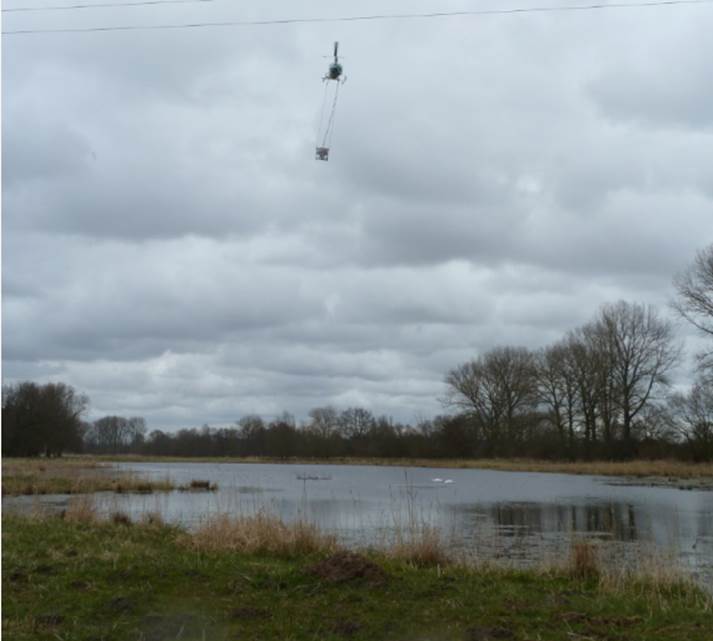In this post, Nina Röder reports on their recently published paper “Mosquito control actions affect chironomid diversity in temporary wetlands of the Upper Rhine Valley”.

The Upper Rhine Valley, a “hotspot of biodiversity” in Germany, has been treated with the biocide Bacillus thuringiensis var. israelensis (Bti) for mosquito control for decades. Although Bti is known for its relatively high target specificity, there is increasing evidence that closely related insects are also affected. For example, previous studies had found negative effects on the abundance of the non-target midges (Chironomidae), with reductions of more than 50% in Bti treatments compared to controls.
However, the effects on species composition in midge communities were unknown since it is time-consuming and requires a high level of expertise to morphologically identify individuals within the midge family down to species level. We therefore used a metabarcoding approach, where DNA is extracted from bulk emergence samples and compared to DNA sequence databases in order to identify the contained species.

Chironomid emergence from three study sites in the Upper Rhine Valley was sampled weekly in the summer months of 2016 including Bti and control treatments. The sites consisted of meadows, floodplains and forests that are flooded after rain events directly or by brooks, forming areas with standing water of low depths for several weeks. After extraction of the DNA from the dried specimens, the barcoding gene, cytochrome oxidase subunit 1 (COI), was amplified. Via high throughput sequencing and bioinformatic processing, around 10 mio sequences were generated and compared to the Barcode of Life database, where currently more than 300.000 COI sequences of over 2.000 chironomid species are available.
In total, we were able to identify 63 different chironomid species in our samples. The sample size and community composition within the treatments was highly variable, ranging from 2 to 1019 individuals and 2 to 27 identifiable species per sample. Still we were able to detect that in one of our three study sites, Bti had a significant effect on the chironomid community composition. There chironomid diversity was 2.5 times higher in the control, where treatment had been stopped for three years, compared to the Bti treated samples. Or, in other words, Bti affected midge diversity negatively with a reduction of 60% in genetic diversity (based on operational taxonomic units (OTUs), a classification for groups of individuals with highly similar DNA sequences). The observed reduction in species richness is in accordance to declines in midge abundances revealed in previous studies.

Our knowledge on the ecological importance of individual chironomid species is limited. Since chironomids represent a key food source for a number of aquatic and terrestrial predators during their different life stages (e.g. fish brood, bats, bird nestlings,…), chironomid community composition changes due to Bti-based mosquito control actions may have unknown indirect effects on higher trophic levels.
We therefore concluded that Bti application should be critically evaluated, especially in nature protection reserves, to avoid a biodiversity decline in non-target organisms such as Chironomids and organisms at higher trophic levels.
The paper was authored by Kathrin Theissinger, Nina Röder, Stefanie Allgeier, Arne J. Beermann, Carsten A. Brühl, Anna Friedrich (née Kästel), Susanne Michiels and Klaus Schwenk, and published in Molecular Ecology.
